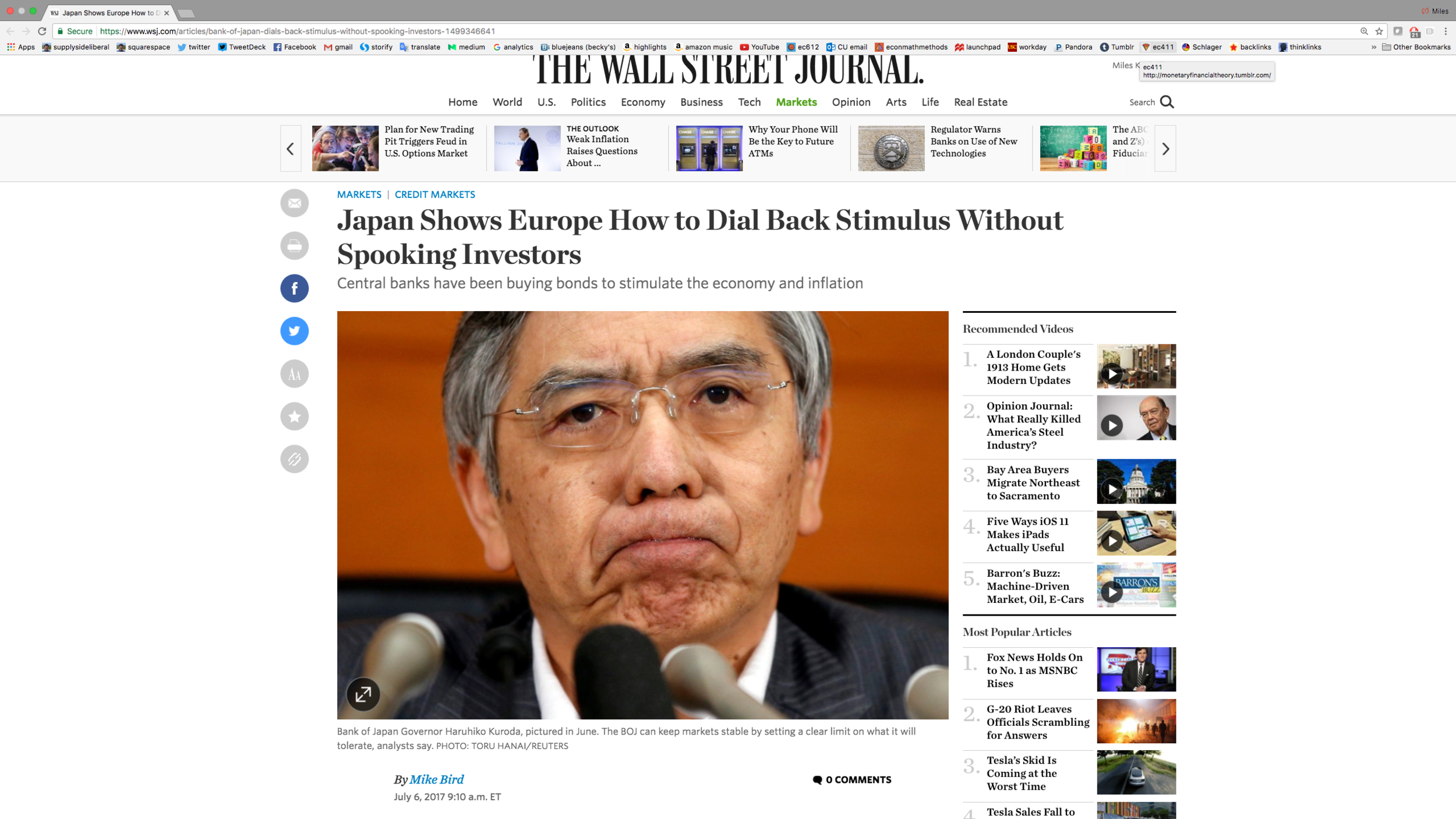Japan Shows How to Do Interest Rate Targets for Long-Term Bonds Instead of Quantity Targets
When the Fed began making large purchases of long-term Treasury bonds and mortgage-backed bonds—"QE"—I wondered why the Fed didn't announce an interest rate target for these bonds instead of a quantity target. An interest rate target for long-term bonds is the same thing as a price target, since there is a mechanical one-to-one relationship between prices and reported interest rates for bonds: by the present-value formula, higher prices are lower interest rates and lower prices are higher interest rates. One advantage of a interest rate target rather than quantity target for long-term bonds is that it would have given a better sense of the modest magnitude of stimulus provided by QE.
In his July 6, 2017 Wall Street Journal article, Mike Bird points out in his title another possible benefit of a price target for long-term bonds rather than a quantity target: "Japan Shows Europe How to Dial Back Stimulus Without Spooking Investors." The Bank of Japan calls these price/interest rate targets for long-term bonds "yield curve control." Mike's argument is to point to the 2013 US "Taper Tantrum" and to the European Central Bank's current communications difficulties:
“Draghi is discovering that narratives contrary to the one you want to get across can take hold in the market,” said Grant Lewis, head of research at Daiwa Capital Markets Europe. ...
Germany’s 10-year bund yields rose by 0.2 of a percentage point in five days, the largest jump since 2015’s “bund tantrum” when investors dumped bonds as they also anticipated less stimulus. ...
The BOJ can keep its markets stable by setting a clear limit on what it will tolerate, analysts say. In early February, when 10-year yields rose as high as 0.15%, the central bank offered to buy an unlimited volume of bonds at a yield of 0.11%, pushing yields back down.
“It’s clearly been easier for (BOJ chief Haruhiko) Kuroda. He’s stood up and said yields will be held at these levels. Try and beat me, I’ve got infinite resources,” Mr. Lewis added. “That’s actually allowed them to start purchasing less.”
One important consideration for an interest rate target for long-term bonds is that, along with the target for safe short-term rates that all major central banks continue to set, this would have effectively set a target for the spread between long-term bonds and the safe short rate. Unlike the short-term safe rate, which can be set in a very wide range (that in fact should be wider than current custom: see my paper "Next Generation Monetary Policy"), there are likely to be real limits on what the spread between short-term and long-term rates can be set at before the central bank ended up with zero or all of a category of long-term bonds. (It would be interesting if a central bank ever chose to do a big short on long-term government bonds.) Thus, an interest-rate target for long-term bonds needs to be kept in a range that implies a reasonable spread between safe short-term rates and long-term interest rates of a given category. But even if a central bank explicitly said it would revise its interest rate target if it ended up with zero or above 90% of a category of bonds, that target would still be quite powerful in its effects on markets.
